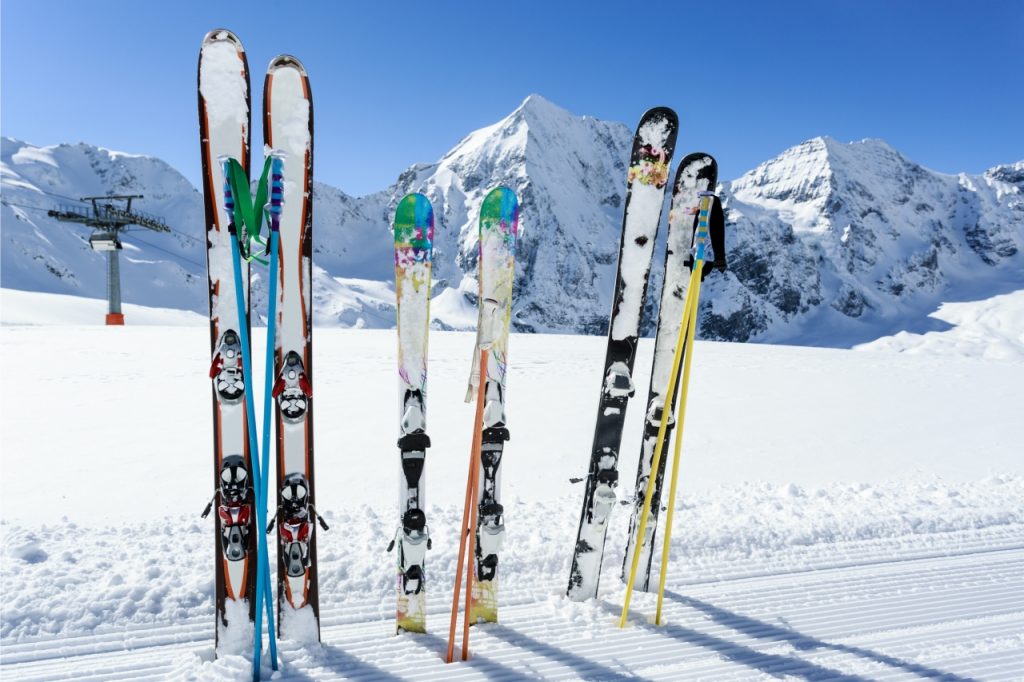If a friend asks you to name a winter sport, odds are that you may say snowboarding or skiing. It is an absolutely favourite with hundreds of thousands of us every year heading for the slopes to get some thrills in the mountain breeze. Greater and greater numbers are experiencing skiing for the first time each season. There one important thing to snowboarding and skiing - you need the proper kit. And the kit that you’ll be needing, will be differ depending on whether you are experienced or a beginner.
Probably the most essential piece of kit will be the things you’ll be strapping to your feet. Namely the Skis! - after all, it would not be skiing without them. There is a tremendous range of skis available, which may be pretty daunting at the time when you go shopping for some. You want to be realistic about your skiing capabilities when selecting a set of skis. If you're a newbie or perhaps intermediate skier, then you’ll want to be able to manoeuvre your skis without too much effort. A professional skier calls for specialised skis. Aside from design, you be looking at the size, material, type, form, stiffness and design of the skis.
What are the made from?
In the beginning, skis have been made from laminated timber, however in recent times, it is very rare to come across wooden skis. Normally they may be made from substances such as fiberglass or aluminium. It's also not so uncommon of to get skis crafted from Kevlar, titanium, carbon or boron fibres, if of course you need something more personal and unique. Quite frequently a couple of skis can be crafted from a combination of materials, as substances provide diverse strength and pliability the different areas of the ski itself. Skis have a core, which is normally manufactured in high density foam, timber or some other specialist material. Aluminium or fiberglass or are generally used for the tops and sides, and the base is mostly a metallic-edged polyethylene.
It’s also helpful if you know what kind of skiing you want to do, as there are skis designed especially for different kinds of skiing. You can probably guess that cross-country skis are not comparable to downhill skis. Cross-country skis and thinner and longer, making it more suitable for gliding along paths. Downhill skis need to cope with sharp turns as you ski down a slope. However, there are still versions of downhill skis depending on whether you will use the skis for slalom, powder, freestyle or packed trails.
Length, shape and style
As a beginner, it is best to shop for a shorter length of ski, as these are a lot less difficult to manoeuvre compared to the longer versions. Freestylers sometimes also favour a short ski. The more experienced you are, then the need to go faster increases, then you be looking for longer skis. These are worn by racers and amateurs who want a get a good fast run. If you can’t anticipate the snow conditions, longer skis might also be more suitable for you. The most appropriate length of ski needed is calculated based on your level of expertise, style and your weight.
After considering the length, you need think about the design or style of the skis. The shapes are as varied as the lengths. Some skis are slim inside the boot region, which makes it easier to manoeuvre sharply. A fatter ski gives you better balance and is designed for making broader turns. The numerous combinations of ski length and design bring about a huge range of combinations.
Last but, not least, think about the stiffness of the skis. Depending on the shape, length and materials used, the stiffness will vary. At top speed you are better off with a longer ski, as those are typically stiffer more stable compared to a short ski. Shorter skis, having greater flexibility, come with a high level of “steer-a-bility”. Again, your degree of skiing expertise and preferred style will decide stiff you want your skis to be.
Getting expert advice
If at all possible, we would suggest that you visit a ski shop before the season starts, not only to pick up a bargain, but to chat to a professional that can talk you through the different styles, length and designs with in more detail. You’ expected them to ask the following:
- What skill level are you? (Beginner, intermediate, expert)
- What style of skiing do you prefer? (Casual, downhill, cross-country, freestyle, competition, all-rounder)
- How much do you weight? (insert answer here!)
- What characteristics are important to you (Speed, manoeuvrability, stability, etc)
Ultimately, based on the answers to these questions, they will be able to short list a number of best suited skis for you and discuss. They’ll be able to tell you the advantages and disadvantages of the different skis. Ideally a set of skis should last you a while. Remember we are not all beginners for ever, so discuss with the experts in the shop, how long before you’d expect to “out-grow” the skis in term of ability.

